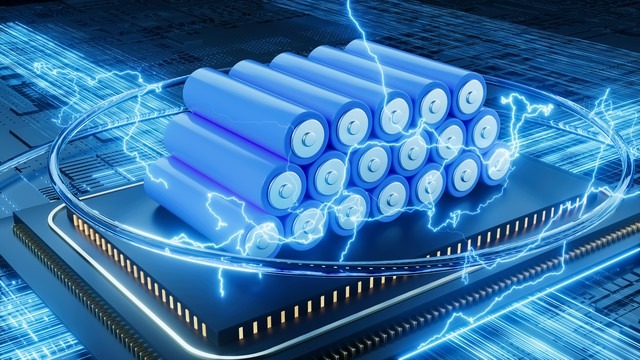Table of Contents
Modern energy technology thrives on precision, and the battery management system stands as its unsung guardian. In an era defined by electric mobility, renewable energy grids, and digital dependence, this intricate electronic architecture ensures that power is not just delivered—but delivered safely. Without it, the risk of overheating, overcharging, or complete battery failure would threaten every application from electric cars to critical aerospace systems.
The Hidden Intelligence Behind Power
At the core of every modern energy device lies a delicate balance between chemical potential and electrical demand. Batteries, though deceptively simple in appearance, are volatile chemical reservoirs. They store energy in compressed molecular states that, when mismanaged, can release catastrophic heat or gas. The intelligence that prevents such disasters operates silently—a control network that monitors voltage, current, and temperature with meticulous accuracy. This invisible intelligence transforms inert energy storage into a dynamic, responsive system.
Precision in Every Electron
Every cell in a battery behaves slightly differently. Variations in manufacturing, material quality, or temperature affect their internal resistance and charge capacity. The smallest imbalance can lead to uneven wear, reduced lifespan, or dangerous instability. Through continuous monitoring and micro-adjustments, control electronics ensure each cell charges and discharges uniformly. This orchestration transforms a collection of independent cells into a single coherent energy system, maximizing both safety and efficiency.
Preventing Thermal Runaway
One of the most critical safety concerns in electrochemical storage is thermal runaway—a self-accelerating reaction caused by excessive heat. Once triggered, it can spread rapidly through adjacent cells, leading to fires or explosions. Advanced control systems act as sentinels, detecting minute temperature variations and halting charge flow before danger escalates. Through predictive algorithms and fail-safe protocols, modern designs prevent incidents long before they manifest physically.
The Architecture of Safety
Energy storage safety depends not just on chemistry but on architecture. Control units are structured in layers of protection. The first layer continuously monitors individual cell performance. The second aggregates data across modules to ensure consistent operation. Finally, a supervisory control interprets overall system health and interfaces with external systems such as vehicle controllers or grid management units. This hierarchical approach creates redundancy—a concept borrowed from aerospace engineering—ensuring that no single fault can lead to system-wide failure.
Communication as a Lifeline
Within advanced energy systems, communication is as vital as current flow. Each module transmits real-time data to central processors using protocols designed for speed and integrity. Whether through CAN bus networks in electric vehicles or Modbus protocols in industrial applications, information travels with cryptographic precision. This constant dialogue enables adaptive response—charging rates adjust, cooling systems activate, and faults are isolated in milliseconds. The fusion of data and energy creates an ecosystem of controlled power.
Extending the Lifespan of Energy Systems
Longevity is not merely an economic concern—it’s an environmental one. Premature battery degradation leads to waste, inefficiency, and higher carbon footprints. Intelligent management extends operational life by maintaining optimal charge levels and preventing over-discharge cycles. Sophisticated algorithms learn from usage patterns, adapting charging behaviors to specific environments and loads. This digital adaptation translates to physical preservation, enabling batteries to perform reliably across thousands of cycles.
A Shield Against Electrical Anomalies
In modern systems, power surges, voltage fluctuations, and current spikes pose significant hazards. Control units function as shock absorbers for electricity itself, smoothing irregularities that could damage delicate electronic components. By dynamically regulating output and isolating faults, they prevent cascading electrical failures. This proactive design ensures not only personal safety but also system integrity, especially in mission-critical operations such as medical devices and aerospace systems.
From Lithium-Ion to Solid-State
The evolution of battery chemistry has magnified the importance of intelligent oversight. Lithium-ion technology, with its high energy density, is particularly sensitive to temperature and voltage variances. Solid-state batteries promise improved safety, yet their unique material properties still demand precise management. As chemistries diversify—lithium-sulfur, sodium-ion, and graphene-based technologies—the intelligence that governs them must evolve in parallel. Hardware and software co-design becomes the key to universal compatibility across energy platforms.
Safeguarding Electric Mobility
Electric vehicles have transformed how we perceive transportation, yet their reliance on high-capacity energy storage introduces unprecedented safety challenges. Automotive-grade control systems continuously balance thousands of cells, each monitored independently. Cooling systems, charge controllers, and regenerative braking mechanisms all synchronize through a digital nervous system. The result is not only enhanced performance but a fortress of safety, where every potential anomaly is anticipated and mitigated before becoming a threat.
Data-Driven Diagnostics
Modern systems do more than protect—they learn. Embedded analytics allow them to record, interpret, and predict performance trends over time. Cloud integration enables remote diagnostics, allowing engineers to detect potential issues before the user notices symptoms. Predictive maintenance, enabled by machine learning, transforms energy storage from a reactive to a proactive discipline. This shift ensures operational reliability and reduces maintenance costs across industries ranging from automotive to aerospace.
Integration into Renewable Energy Grids
In renewable energy systems, control architecture plays a central role in harmonizing fluctuating power sources. Solar panels and wind turbines generate energy inconsistently, often producing surges or deficits. Intelligent battery controllers stabilize this volatility by modulating storage and discharge rates. The seamless integration of renewables into national grids depends on these digital guardians that convert unpredictability into dependable power. By maintaining equilibrium, they accelerate the global shift toward sustainable energy independence.
Balancing Power and Heat
Thermal regulation remains one of the most complex aspects of energy management. Heat is both a byproduct and a threat to battery integrity. Advanced systems utilize sensors, cooling loops, and heat-dissipating materials to manage this delicate relationship. Some employ liquid cooling for high-performance vehicles, while others use phase-change materials for stationary storage units. The harmony between thermal control and energy flow defines the limits of performance and safety.
Standardization and Regulatory Influence
The development of safety standards has evolved alongside technological innovation. International frameworks such as ISO 26262 and UL 1973 outline stringent requirements for energy system safety, performance, and interoperability. Compliance ensures that devices meet rigorous global benchmarks for reliability. Beyond mere regulation, these standards drive innovation—encouraging designers to anticipate potential failure points and create resilient systems capable of operating in extreme conditions.
The Role of Software in Protection
Software now governs what was once the domain of hardware. Algorithms manage charge-distribution logic, calculate cell health, and predict failure risks. Real-time firmware updates ensure adaptability to changing environmental or operational conditions. This software-centric approach allows faster innovation cycles, enabling manufacturers to enhance safety features through code rather than redesigning hardware. It also facilitates cybersecurity integration, preventing unauthorized access to critical energy systems.
Industrial and Aerospace Applications
Beyond consumer electronics and vehicles, controlled energy systems underpin critical infrastructure. Aerospace applications demand fault-tolerant energy delivery capable of withstanding extreme temperature shifts and vibration. Industrial robotics depend on uninterrupted power for precision tasks. In such fields, the failure of even a single cell could compromise entire missions. High-reliability control architectures mitigate this risk, employing redundancy and real-time failure isolation to ensure continuous operation under any circumstances.
Smart Cities and Grid-Level Safety
As cities evolve toward smart infrastructure, the interconnection between distributed energy sources becomes increasingly complex. Urban power systems rely on synchronized storage networks to stabilize demand surges. Intelligent management ensures that power flow remains consistent across distributed nodes, reducing the risk of blackouts or overloads. Grid-level control also enables energy-sharing models where excess electricity from one source can safely power another region—an essential step toward energy-efficient cities of the future.
Safety in Portable Devices
From smartphones to medical implants, portable electronics depend on miniature energy systems that must operate flawlessly. Safety measures in these compact environments are no less critical than those in industrial systems. Miniaturized sensors monitor charge dynamics and prevent overheating during fast charging. Innovations in nanomaterials have further improved efficiency and safety margins, allowing high-performance devices to operate without compromising reliability or user security.
The Future of Intelligent Power Systems
As artificial intelligence integrates deeper into energy management, predictive control will replace static programming. Systems will self-calibrate in response to environmental changes, user habits, and performance feedback. Future designs will integrate cross-domain intelligence—linking automotive, residential, and grid-level storage into unified control architectures. The convergence of AI and energy storage marks the dawn of autonomous power systems capable of optimizing themselves continuously.
Human Safety as the Ultimate Measure
While the engineering intricacies are vast, the ultimate purpose remains singular: to protect human life. Whether preventing electrical fires in vehicles, safeguarding hospitals from power interruptions, or ensuring stable supply in disaster zones, energy management exists to serve humanity. Safety is not merely a technical achievement but a moral imperative—an assurance that progress does not endanger those it seeks to empower.
The Ethical Dimension of Control
With great technological power comes ethical responsibility. As energy storage becomes more intelligent, it raises questions of autonomy, privacy, and control. Data gathered by intelligent systems reveals patterns of use, location, and behavior. Protecting this information becomes as vital as safeguarding the energy itself. Designers must build trust through transparency, ensuring that safety extends not only to physical systems but also to the digital ecosystems that govern them.
Toward a Safer Energy Future
The path forward lies in integration—between hardware and software, energy and intelligence, innovation and ethics. As energy demands escalate, safety will remain the cornerstone of progress. Intelligent control systems represent the culmination of decades of interdisciplinary research in chemistry, physics, and data science. Through this synthesis, humanity moves closer to a world where energy is abundant, efficient, and safe—power harnessed not by chance, but by design.


.jpg)



